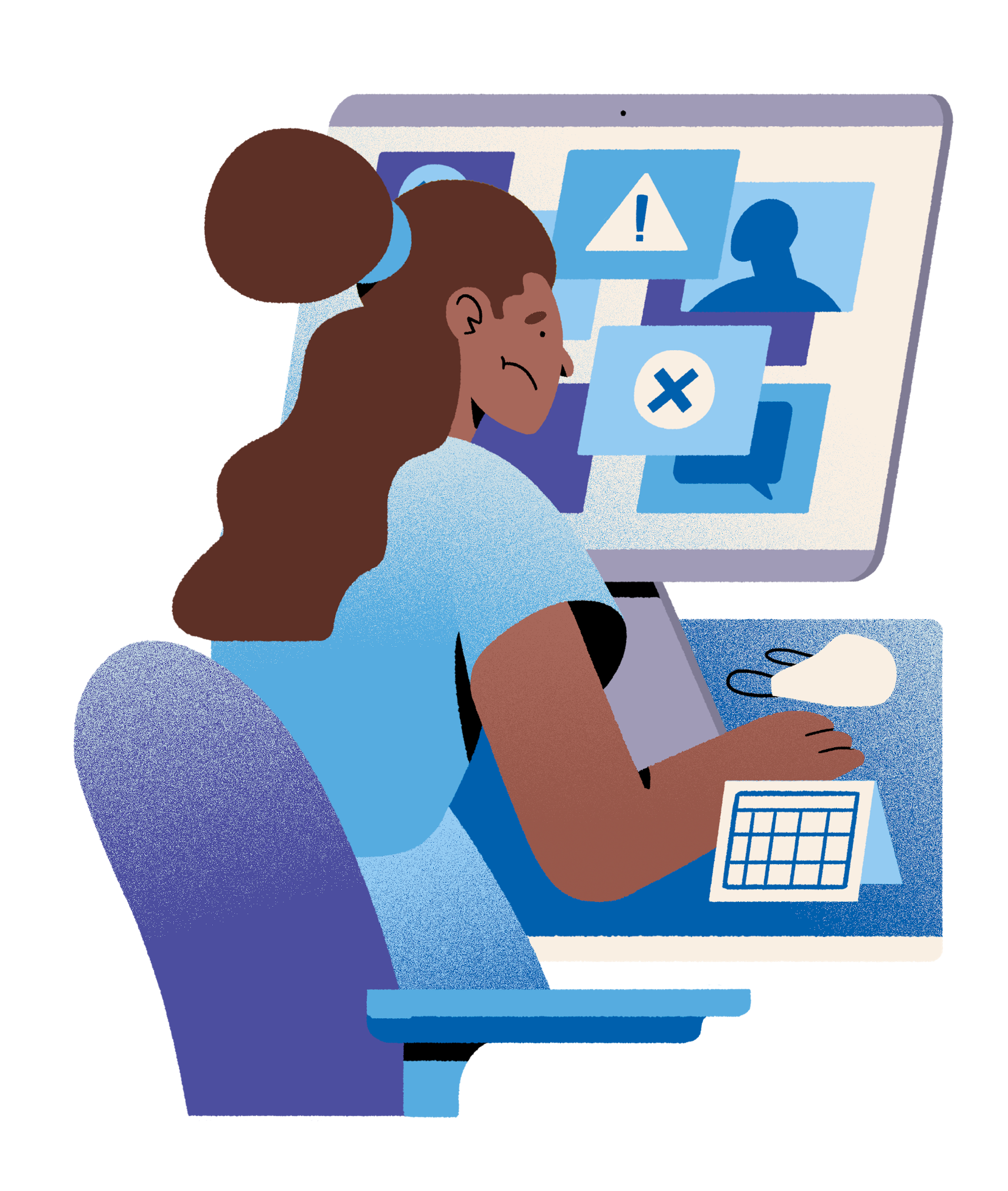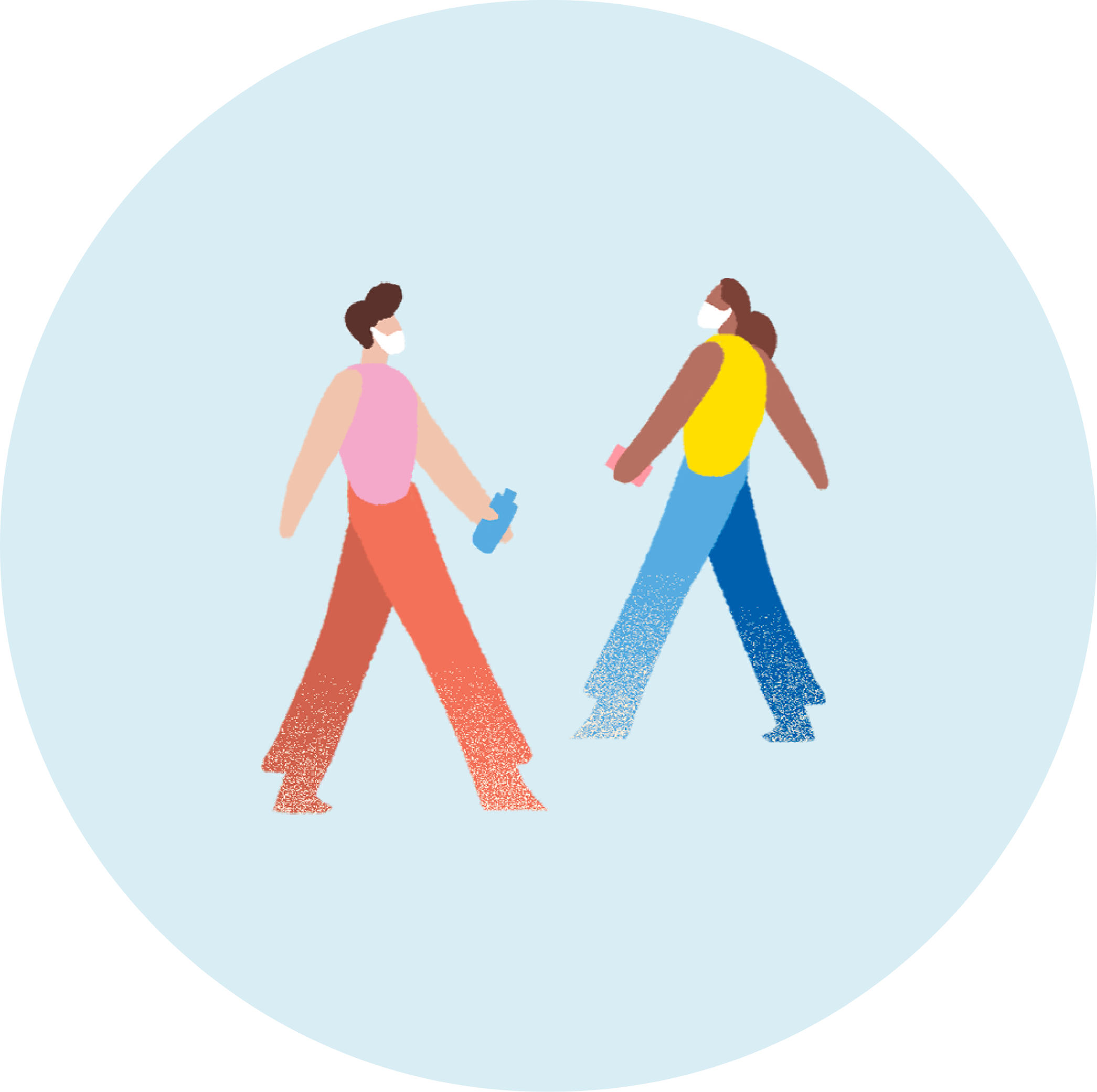
This article is part of a series of updates to “Navigating What’s Next: The Post-COVID Workplace.”
The COVID-19 crisis thrust millions of us into a mass experiment in working from home. As economies begin to reopen, CEOs are starting to think about how work will change as a result of what we’ve experienced and learned. The ways we need to compete are different now and a return to business as usual is not what organizations and employees will need as we enter one of the most volatile and complex business climates in recent history. To succeed, organizations will need to be highly adaptable, and able to respond and adjust quickly to changing conditions now and in the future.
In this article, we’ll share research on:
Why extreme work-from-home strategies are high risk
Why returning to the status quo isn’t right for today — use this moment to drive change
What’s next: Five ways to create a compelling and safe workplace
We are at a tipping point and senior leaders must make a choice about where and how people will work. The wrong choices could prove costly on many levels. The pressure to get it right has never been greater.
The Realities of an Extreme Work-From-Home Strategy
People have been predicting the end of the office since the invention of Wi-Fi and laptops. Today, lots of people are suggesting the office will go away as companies fully embrace work from home as a way to give people greater flexibility. During the crisis, anyone who could work from home did and, for a while, many people thought it worked pretty well. But after months of living on video, the novelty has worn off. The vast majority of us — 88-90%* depending on the study — want to work in an office again.
The vast majority of us — 88-90%* depending on the study — want to work in an office again.
So why are we still having conversations about the office going away?
There are three common misconceptions that continue to fuel the notion that exclusively working from home makes sense for everyone.
The reality behind three common work-from-home misconceptions
 Open image tooltip
Open image tooltip Weigh the Costs
Real estate and people are the two highest investments an organization makes. As some companies consider ways to reduce real estate as a cost-saving strategy, it’s important to consider the true costs to people.
 Open image tooltip
Open image tooltip
Define Productivity
How does your organization define and measure what it means to be productive? Routine work can be done at home. But, most leaders don’t want empty inboxes, they need good ideas, problem solving and innovation.
 Open image tooltip
Open image tooltip
Focus on Wellbeing
Working from home is attractive because it suggests a better work-life balance. But, extreme WFH strategies can actually make it more difficult to separate work from life and cause stress for employees’ wellbeing.
Misconception #1
“It costs less to have people work from home.”
It’s true that reducing real estate and other related workplace amenities can save money. But there are hidden costs to consider before sending people home full time.


Everyone's situation is different.
The office has the potential to provide everyone with the spaces and tools they need to get work done. But when working from home, some people have to juggle small spaces, family and roommates along with poor equipment and technology.
Reality:
Working from home is not possible for everyone. People may leave.
Some senior leaders perceive that WFH has been widely successful, but data tells a different story. Executives with larger homes and dedicated, well-outfitted home offices are doing fine. Their days are filled with video meetings reviewing the work of others. But their teams and more junior people, often with smaller homes, roommates or younger families, are already facing a number of challenges that are not sustainable.
Steelcase research found senior leaders (directors or above) have more access than individual contributors to:

It's harder to build relationships from home.
Social capital helps people trust one another, and trust is the currency of innovation. In-person connections are most effective for building social capital and helping people feel a sense of community.
The Steelcase research went on to say that 75% of directors or above report always or almost always working at a desk at home while only 46% of individual contributors do. And in large metropolitan areas around the world, people often grapple with small living quarters shared with others which can make working from home difficult. Research from the Cheung Kong Graduate School of Business in Beijing found that more than half of workers said their efficiency declined while working from home.
For people who don’t have an optimal home office, eliminating the choice to work from an office may make that job opportunity on LinkedIn more tempting. In fact, people who always or very often work from home are far less likely to say they’ll stay at their companies for their entire careers: 5% compared to 28% of those who never work remotely say they will (Workplace Trends and Virgin Pulse).
Of people who work from home all or most of the time, only 5% say they’ll stay at their company through their career.
(Workplace Trends and Virgin Pulse)

Reality:
Too much remote work hurts social capital and slows innovation.
One of four main reasons people succeed working remotely is they’ve already worked with colleagues at a main worksite, according to Judy Olson, Ph.D. (University of California Irvine) who studies distance work, publishing over 100 research articles on the topic. People who’ve worked together in person, have built social capital — a set of shared values that allows them to work together effectively, she notes. This leads to trust, which is the currency of innovation.
In an interview with the Financial Times*, Citigroup’s investment banking leader Paco Ybarra expressed concern that without in-person contact, at some point, the social capital remote workers are relying on right now will depreciate. To that point, previous experiences with large-scale, mandatory WFH programs show that the real problems don’t show up until after a year or so, as employee turnover begins to weaken the social networks that developed over years of in-person interaction. As social capital declines, morale decreases, turnover increases, productivity falls and eventually new leaders quietly abandon these programs and promote a return to the workplace (VitalSmarts).
Reality:
The home office increases risk to employee safety and corporate security.
Most home offices don’t adhere to the strict safety measures that organizations must adhere to, prescribed by governmental agencies such as the Occupational Safety and Health Administration (OSHA) in the U.S., EU-OSHA in Europe, or the International Labour Organization in Asia. Regulations cover specific safety criteria for their workplaces but not for home offices (Forbes.com). Yet, workers in home offices are potentially at increased risk of tripping, fire hazards, inadequate lighting and poor ergonomics.
Organizations also need to consider the security of information or IP in a home office where there is less control over guests and who has access to home office whiteboards, desks, or sensitive documents that might be left out where others can see them. In fact, 84% of IT professionals say data loss is a significant concern when people work from home. The office is a more controlled work environment when it comes to worker safety and corporate security – and employers lose control and take on added risk as a greater percentage of their employees work from home.
Misconception #2
“People are just as (or more) productive at home as they are in the office.”
That depends on how you define productivity. Some forms of work are easily accomplished at home. But true productivity of knowledge workers relating to creativity, innovation and transformation are notoriously difficult to measure in the short-run — particularly during a pandemic — and incredibly hard to accomplish virtually.


Great ideas can't be scheduled.
The ebb and flow needed for the creative process can't happen in a series of short online meetings. People who are together, building on each other's ideas while working with the same information, can more easily ideate and solve problems.
Reality:
Individual task work is up. Collaboration and creativity are down.
Short meetings are skyrocketing, and longer meetings are decreasing according to a study of Microsoft’s 300-person Modern Office team:

10% increase in meeting time overall

22% increase in short, 30-minute meetings

11% decrease in longer, one-hour or more meetings
Shorter meetings seem, on the surface, to increase productivity. The reality is exhaustingly different. In the words of one tech leader: “we’re doing full days of wind sprints from one meeting to the next, without time to process or think about the outcome of the meeting, let alone take action on it.” In essence, collaboration is a lot harder.
62.6% decline in time spent working with others
(Steelcase WorkSpace Futures research)
55% say collaborating with others is harder working from home
(Gensler’s U.S. Work from Home Survey 2020)
Some studies suggest online collaboration has proven to be successful during the crisis. But it’s important to recognize there are three types of collaborative work:
– Informative: sharing information or coordinating tasks
– Evaluative: considering options, making choices
– Generative: creating new ideas and solving complex problems

Distractions at home can make it hard to focus.
When asked why they want to go back to the workplace, people say they want to be with others. It's those in-person moments that help people be more productive and feel a sense of purpose.
Reality:
Proximity and social accountability boost productivity.
Well-established science has long proven proximity enhances team productivity. Olson (UC Irvine, formerly at University of Michigan) co-led a study at Ford that showed teams working in the same room doubled productivity versus previously when they worked on separate floors. People can read each other’s body language, jump in when help is needed and get questions answered quickly, she notes. The rise of agile work, which emphasizes co-location, has reinforced these learnings. Additionally, studies show that people tend to work harder when surrounded by others who work harder — a concept called “social facilitation.” In fact, people run faster, are more creative and think harder about problems when they have an audience, as cited by Harvard Business Review.
Informative and evaluative collaboration can easily happen via video. But generative collaboration is the most challenging in any condition and the most difficult to replicate online. In an all-virtual environment people struggle to have a normal flow of conversation and read body language while sharing content — both of which are critical behaviors to innovation. In a recent Wired interview, Google CEO Sundar Pichai seemed to address this exact issue when he questioned if virtual teams would still be productive if they needed to brainstorm and be creative when they have not previously worked together in person.

Reality:
Work is inherently social. Serendipity is absent online.
Ask people what they miss most about the office, and not surprisingly 74% say “the people,” according to Gensler’s US Work from Home Survey 2020. But this isn’t just a feel-good metric. Work is inherently a social activity. Respondents cite four top reasons they want to return to the office:
Reality:
We might be creating a “lost generation at work.”
Working from home full time disproportionately affects millennial and Gen Z workers. They report feeling the least accomplished of all generations, failing to understand how their work at home contributes to company goals and what’s expected of them (Gensler U.S. Work from Home Survey 2020). Only 35% of both groups feel like they’ve made a difference working from home. Those numbers are only slightly larger for Gen X (39%) and Baby Boomers (44%). Remote work also decreases networking opportunities and the chance for mentorship. In fact, professional development and coaching is a reason one-third of all workers want to go back to the office. Adopting an extreme work-from-home policy could impact the ability for organizations to grow the next generation of leaders.

54%
Impromptu face-to-face interaction

54%
Socializing with colleagues

54%
Scheduled meetings with colleagues

45%
To be part of a community
Our interpersonal, professional networks are shrinking as we limit ourselves to interacting with tiny tiles of people with distracting beach backdrops on a computer screen. Hallway conversations are non-existent and meeting new people is increasingly difficult. Steve Jobs is famous for touting the value of running into other people. He talked about “engineered serendipity” — personally having a hand in designing the layout of Pixar’s floorplan to foster unplanned interactions between employees. And Microsoft’s Satya Nadella cautioned against “over celebrating” in areas where raw productivity metrics rose, saying it’s tough to identify and virtually replicate the value that comes from managing, mentoring and connecting with people before and after meetings. Innovation happens when ideas collide, and people stitch concepts together to create something new. Serendipity can’t be scheduled.
Misconception #3
“People who work from home have a better work-life balance.”
Working from home has its benefits — no commute, comfy clothes and more time with family or pets. But data reveals it also comes with its own set of tradeoffs.
Reality:
People work longer as the line between “work” and “home” blur.
Employees around the world have increased their average workday dramatically since the onset of remote work following the COVID-19 outbreak.
U.S.

Three extra hours
per day
U.K., France, Canada and Spain

Two extra hours
per day
Germany, Austria, the Netherlands and Belgium

One extra hour
per day

It's tempting when working from home to be "on work" from sunrise to sunset.
Place-based rituals like commuting to work or grabbing a coffee at the café help create important work-life boundaries.

“Social exchange theory” indicates that employees respond to being given the ability to work remotely by working more, according to the Harvard Business Review. Employers frequently add to the workload, making requests that can’t get done within a certain time period which can contribute to employee resentment and burnout. Buffer’s State of Remote Work study found that the top struggles people cite are the difficulties with collaboration and communication, loneliness and not being able to unplug.
Working from home exclusively can also cause a phenomenon called “temporal disintegration.” If you find yourself asking “What day is it?” you are experiencing it — people can feel slightly disoriented, without a sense of the future. It is connected to loneliness and feeling a lack of purpose. Without place-based rituals like driving to work, or being with others, people struggle to differentiate one day from the next. Without a physical separation between work and life, it becomes difficult to set boundaries.
Reality:
Virtual meetings are more exhausting than in-person ones.
“Zoom fatigue” is real. The exhaustion many people feel from a life lived on screen day-in-and-day-out is based in neuroscience. Our brains have to work harder to make sense of the limited cues we get on screen. We have to pay more attention to understand facial expressions, the tone and pitch of the voice and body language (BBC). In addition, having a monofocus in one spot fails to allow our eyes or brains to take a break like we can when we are physically present. And while it helps to see faces on video, all that time on the “virtual stage” pressures us to feel like we have to perform which tires us out. Experts say boundaries and transition periods are important factors to reducing fatigue, but they require much more intentionality online.
Steelcase research during the pandemic found that only 21% of people reported being highly engaged at home — significantly lower than the 34% reported by the Steelcase Global Report: Engagement and the Global Workplace done before COVID-19. More research prior to the pandemic confirmed constant digital interactions can be a barrier to engagement as people hit a “digital wall.” Two-thirds of employees who always or very often work remotely are not engaged (Workplace Trends and Virgin Pulse). Working virtually became a little easier when everyone was doing it during the pandemic. As more employees return to the office, meetings will increasingly experience “mixed presence.” This can create “presence disparity,” a disadvantage for virtual attendees during meetings with co-located teammates who may struggle to participate fully. The result is inefficiency that’s exhausting for virtual and co-located workers, alike.

Reality:
Sedentary work takes a toll on physical wellbeing.
WebMD polled more than 1,000 readers in the U.S. and found half of the women and 25% of men reported gaining weight due to COVID stay-at-home restrictions. Contributing factors included: a lack of movement (no walking between meetings), no shifts in posture, constant access to food, etc. In addition, damaging ergonomic environments are literally generating physical pain at home. WKspace, a UK workplace strategy firm, reports 84% of people still need a suitable workspace at home. Movement, ergonomics and healthy nutrition are all dimensions of wellbeing people are missing while away from the office.

Movement throughout the day makes a difference.
Sitting in the same spot, staring at the same screen day-in and day-out makes people physically, mentally and emotionally exhausted. Physical movement allows people to reenergize and rejuvenate.
What’s Next: Skip the Status Quo — Drive for Change
So, what is the future of work and the workplace? It’s not a return to the status-quo nor is it an extreme solution predicated by aggressive cost-reduction. A new approach to the workplace is required – one that is compelling and safe for employees and smart for the business.
Our work from home honeymoon is over according to WKspace, whose global research shows people reach a point of diminishing returns when working from home. Their research suggests that enjoyment, motivation and connection all began to decline and productivity levels-off after just five weeks of working from home.
As leading organizations learn more about the long-term realities of extreme WFH strategies, they are realizing what they knew all along is true: the workplace is essential to drive growth, build organizational culture, and fuel the kind of innovation that drives the global economy.
But that doesn’t mean a return to the office of the past. These organizations are rethinking the role of the workplace – not how they eliminate it, but how to make it an even stronger competitive advantage.
A number of organizations have publicly stated their intent to safely bring people back to the office while also adopting sensible work-from-home strategies. They are expanding their thinking to create an “ecosystem of places” that include the workplace, more flexible opportunities to work from home and potential satellite spaces. Organizations, like these, are committed to ensuring the employee experience is consistently positive, compelling and safe across the entire ecosystem. This approach seems to offer the greatest benefits to employer and employee alike, while also helping the business to establish a more resilient strategy for the places their people work.
Five Ways to Build a Compelling + Safe Workplace
Based on decades of research, these strategies can help organizations create the kind of workplaces that are able to adapt to changing circumstances and support what people need to feel safe, be productive and have a sense of belonging at work.

1
Expand the ecosystem of places, offer more choices, more control
Everyone’s sense of what makes them feel safe will be different and will change over time. So, we will need an expanded ecosystem of places — the workplace, home and potential satellite spaces — from which people can choose where and how to work based on their needs. By giving people choice, they are able to feel a sense of control over their work and a sense of safety. Steelcase Global Report: Engagement and the Global Workplace found employees who had more control over their experience at work were more satisfied with their workplace and more highly engaged.
To attract and retain talent, organizations need a diversified workplace strategy to meet the diverse needs of people and how they want to work. People will need spaces to support different types of work — focus, collaboration, socialization, learning and rejuvenation — and different ways of working.
2
Shift from fixed to fluid
Work environments designed with fixed architecture and furniture must shift to become more fluid. No one knows what the future holds. Disruption is a given — whether it’s another wave of the virus, social unrest that shuts down a city or a natural disaster. Organizations need spaces that can adjust easily and quickly – not just by facilities but by employees – supporting the social distancing requirements of today, but also empowering employees to adapt spaces based on the type of work they need to do and the level of privacy they need to do it.
3
Focus on “me within we”
The workplace will need to balance the growing need for teamwork (“we”) with the needs of the individual (“me”). Prior to the pandemic, work was becoming more team-based and many people struggled with open plan offices that emphasized group work to the exclusion of individuals’ need for concentration and focus. After the crisis, we’ll lean on the office to support the collaborative work we’ve all missed in an even bigger way — people will need to be able to quickly shift between working alone and together. They’ll also need more spaces to focus, especially if they can’t find solace at home and places for rejuvenation, as they’ll likely continue to feel stress and anxiety. Video calls will be more frequent since distributed work will continue due to ongoing travel restrictions and some people will return to work in the office while others remain at home, so they will need more spaces to take video calls without disrupting coworkers.
4
Make every collaboration space high performing
People had two primary destinations for collaboration before the crisis sent us home — open spaces with a coffee shop vibe and traditional, enclosed meeting rooms. Both will need to be rethought and become higher performing going forward. Some of the most inspiring spaces on corporate campuses often sat empty as people gravitated to places where they could get work done. Traditional conference rooms may have been equipped with whiteboards or technology, but they rarely fostered creative thinking, and now will present challenges for distancing requirements. Going forward, collaboration spaces need to be inspiring, high performing and safe. Collaboration spaces (open and enclosed) in the workplace will need to support a range of postures, easy access to power and the ability to control the level of privacy while still feeling relaxed and comfortable. They need to offer tools for idea generation — such as whiteboards and large-scale collaboration technology to connect with remote teammates.

5
Merge the digital and physical
A crash course in remote work pushed people to improve their digital skills and now the physical and digital need to come together in spaces that support co-located and distance work. As teams embrace more video-based collaboration, large-scale collaboration devices create a more inclusive experience for people and their content whether they are in the same room or working apart.
Embedded layers of smart and connected technology can create a more touchless experience at work. And occupancy data will support data-driven decision making to control density and influence cleaning frequency. And as companies work to figure out when changes need to be made to the workplace, data will be an important part of moving forward.
Sources
*Cushman and Wakefield which surveyed 40,000 people globally reports under 10% will work from home full-time.
*Gensler’s U.S. Work from Home Survey 2020 reports only 12% of workers want to work from home full-time.
Buffer and AngelList, “State of Remote Work 2020,” lp.buffer.com/state-of-remote-work-2020
Business Facilities, “U.S. Employees Working More Hours During COVID-19 Pandemic,” (March 23, 2020)
Davis, Michelle, Green, Jeff, “Three Hours Longer, the Pandemic Workday Has Obliterated Work-Life Balance,” Bloomberg, (April 23, 2020)
DealBook, “What Satya Nadella Thinks,” New York Times, (May 14, 2020)
Farrer, Laurel, “Are Home Offices Dangerous?” Forbes, (May 20, 2020)
Fishbach, Ayelet and Steinmetz, Janina, “We Work Harder When We Know Someone’s Watching,” Harvard Business Review, (May 18, 2020)
Gurman, Mark, “Apple Plans to Return More Staff to Offices in Break From Rivals,” Bloomberg, (May 12, 2020)
Jiang, Manyu, “The Reasons Zoom Calls Drain Your Energy,” BBC, (April 22, 2020)
Levy, Steven, “Sundar Pichai Says Google Doesn’t Plan to Go Entirely Remote,” Wired, (May 22, 2020)
Moss, Jennifer, “Helping Remote Workers Avoid Loneliness and Burnout,” Harvard Business Review, (November 30, 2018)
Noonan, Laura, “Citi Investment Bank Boss Predicts Resurgence of Offices.” The Financial Times, (May 24, 2020)
Olson, Judith, Krishnan, M.S., Covi, Lisa, Teasley, Stephanie, “How Does Radical Collocation Help a Team Succeed?”, Association of Computing Machinery, (December, 2000)
Roose, Kevin, “Sorry, but Working From Home Is Overrated,” New York Times, (March 10, 2020)
Schawbel, Dan, “Survey: Remote Workers Are More Disengaged and More Likely to Quit.” Harvard Business Review, (November 15, 2018)
Tessian, “The State of DLP 2020,” tessian.com/research/state-of-data-loss-prevention-2020
VitalSmarts, “Virtual Reality: Remote Employees Experience More Workplace Politics Than Onsite Teammates,” (November 2, 20020)
WKspace, “Understanding How Workers and Workplace May Change Post-COVID-19,” wkspace.co.uk, (May 2020)




